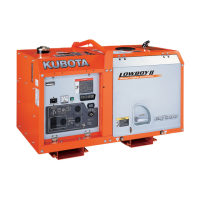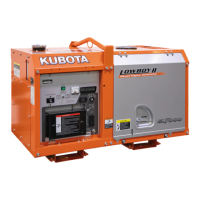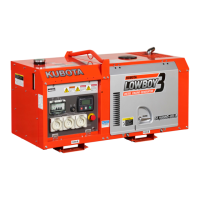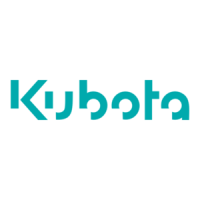2-S9
GL6000, GL7000, GL9000, GL11000, WSM
GENERATOR
[2] TIGHTENING TORQUES FOR GENERAL USE SCREWS, BOLTS AND
NUT
When the tightening torques are not specified, tighten the screws, bolts and nuts according to the table below.
W10371750
Screw and bolt material grades are shown by numbers punched on the screw and bolt heads. Prior to
tightening, be sure to check out the numbers as shown below.
W1012705
Grade
Nominal Unit
Diameter
Standard Screw and Bolt
Special Screw and Bolt
N·m kgf·m lbf·ft N·m kgf·m lbf·ft
M4 1.0 to 2.9 0.1 to 0.3 0.7 to 2.1 – – –
M5 1.9 to 3.6 0.2 to 0.4 1.4 to 2.7 – – –
M6 7.9 to 9.3 0.80 to 0.95 5.8 to 6.9 9.8 to 11.3 1.00 to 1.15 7.23 to 8.32
M8 17.7 to 20.6 1.8 to 2.1 13.0 to 15.2 23.5 to 27.5 2.4 to 2.8 17.4 to 20.3
M10 39.2 to 45.1 4.0 to 4.6 28.9 to 33.3 48.1 to 55.9 4.9 to 5.7 35.4 to 41.2
M12 62.8 to 72.6 6.4 to 7.4 46.3 to 53.5 77.5 to 90.2 7.9 to 9.2 57.1 to 66.5
Punched number Screw and bolt material grade
None or 4 Standard screw and bolt SS41, S20C
7 Special screw and bolt S43C, S48C (Refined)





